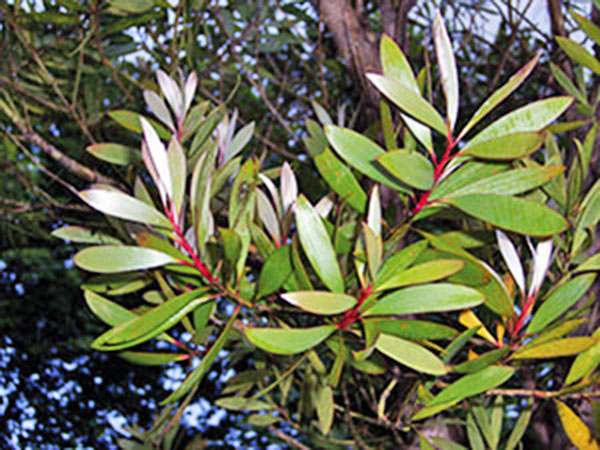|
by Christopher Vasey N.D. New Dawn 184 (Jan-Feb 2021) from NewDawnMagazine Website
In the absence of treatment, many patients succumbed to their illnesses.
However, over the last few decades, an increasing number of studies have brought these plants back into the spotlight.
Extensive research has made it possible to gain a deeper understanding of their antibiotic properties.
Not only have they been shown to have greater therapeutic effectiveness than was once believed, but also a much greater spectrum of action. Indeed, many are effective against viruses, which is not the case for pharmaceutical antibiotics.
In addition, their side
effects - if they even have any - tend to be benign, and the plants
do not prompt germs to develop resistance against them.
Natural antibiotics have a twofold action:
A plant's direct action comes from the toxicity and caustic nature of the antibiotic substances it possesses.
The indirect action of natural antibiotics (which conventional antibiotics do not possess) is equally dangerous for germs.
Although they are not attacked directly, germs still suffer serious damage because, by altering the characteristics of the terrain, natural antibiotics make it unfit for their survival.
Natural antibiotics
possess, in fact, other characteristics that distinguish them
fundamentally from conventional antibiotics.
They offer effective and
non-toxic treatment against numerous illnesses (flu, shingles, etc.)
that are untreatable by conventional antibiotics. This is all the
more valuable because, outside of natural antivirals, the number of
existing antivirals is quite limited.
What are the reasons for this?
The essential oil of mountain savory, for example, owes its action to one ketone, four kinds of phenols, and seven kinds of monoterpenes, to mention only a few of its components.
A germ that tries to
develop a resistance to this natural antibiotic would have to
produce either an enzyme capable of neutralizing all these molecules
at once (which is impossible) or a dozen different enzymes (which is
also impossible).
To the contrary, they support a healthy microbial balance by killing the virulent germs.
If they do happen to trigger such symptoms, it would only be due to the laxative effect of certain plants.
These are the volatile aromatic oils that give plants their characteristic odors and contain their medicinal constituents. They are extracted from plants by distillation or expression.
These oils are contained
in the tiny droplets of aromatic substances that are released by
crushing mint or thyme leaves, for example.
Among these compounds are,
They are among the most
powerful of natural antibiotics.
Several minutes after
they have been spread on the skin, they will have entered the
bloodstream. Twenty minutes to two hours later, they are in the
lungs, being exhaled with every breath.
If an additional cure is necessary, one should switch to natural antibiotics in the form of mother tinctures, which are alcohol and water-based preparations.
These can be used for long-duration treatments.
The antibiotic properties
of this tree have been long known to the natives of these regions,
who used them to disinfect water.
Niaouli oil is distilled from the fresh leaves and twigs
of the paperbark tree.
It is therefore an
excellent antibacterial, antiviral, and antifungal. To a lesser
extent, it is also active against parasites like the plasmodium that
is responsible for malaria.
Diluted in a little sweet
almond oil, it is effective against skin infections.
The oil extracted from the Cinnamomum camphora that grows in Madagascar is known as ravintsara.
This is the medicine of
the Malagasy, who have long known of the medicinal properties of the
tree's leaves and have benefited from using them to treat a vast
number of health problems.
This spectrum is, in fact, so broad that ravintsara essential oil is recommended for all viral afflictions:
It is especially effective against the flu virus (whether used to prevent it or heal it), shingles, and infectious mononucleosis.
In addition to its
antiviral activities, ravintsara essential oil is also an effective
antibacterial and has both antifungal and antiparasitic effects. Its
spheres of operation are primarily the respiratory tract, the
digestive tract, and the skin.
The Mother Tincture
of Purple Coneflower - Echinacea purpurea
Its enzymes destroy the enzymes that bacteria release to weaken the cellular membranes of their host cells.
The bacteria must therefore remain outside the
cells to carry out their harmful activities, and there they are
destroyed by the macrophages whose production and activity are
strongly increased by the immune-stimulating properties of echinacea.
Echinacea therefore has an extremely broad spectrum of action, which makes it useful against all infections, wherever they may be located.
Because of its completely
innocuous nature, it is recommended for use by everyone, including
children and the elderly.
In long-term treatments (to address chronic infection or flu prevention, for example), echinacea's immune-stimulating actions are more effective if it is taken in courses with a pause between them.
For example, you might
take echinacea for two weeks, then pause for one week, then repeat.
To learn more, read Christopher Vasey's book 'Natural
Antibiotics and Antivirals: 18 Infection-Fighting Herbs and
Essential Oils.'
|



